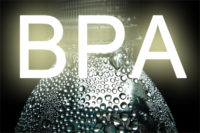
Researchers from the University of Missouri have conducted experiments using silver nanoparticles on pears, and the results suggest toxic nanomaterials may be entering the human food supply. Use of nanomaterials for water treatment, food packagina and pesticides has increased in recent years.
Scientists developed a test for detecting silver, a common nanoparticle, on the skin of fresh produce and other foods, and the results of recent experiments reflect a growing concern over the possibility that nanomaterials are entering the human food supply. Pears were submerged in a silver nanoparticle solution similar to a nanoparticle solution, before being washed and rinsed repeatedly. Four days later, silver nanoparticles were still present on the pear's skin, and smaller particles had penetrated the skin into the pear's pulp.
“The penetration of silver nanoparticles is dangerous to consumers because they have the ability to relocate in the human body after digestion,” says Mengshi Lin, associate professor of food science in the MU College of Agriculture, Food and Natural Resources. “Therefore, smaller nanoparticles may be more harmful to consumers than larger counterparts.”




